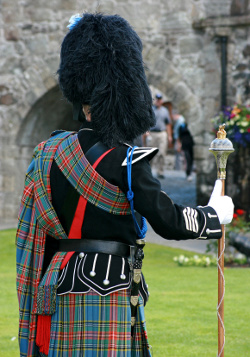All About Scottish Kilts
When it comes to national costume, we don't think there's anything that can match Scottish kilts!
They're colorful, exotic, stylish... and just plain cool!
Although it's not only we Scots who can lay claim to the kilt as a form of national dress, traditional kilts are recognized around the world as a symbol of Scotland.
In it's most original form, the kilt was a piece of clothing uniquely suited to the practical needs of Highlanders, and may have it's roots in the type of clothing worn by the numerous invaders who landed on Scottish soil so long ago.
It has changed a LOT since, is now most often seen at ceremonies and official occasions ranging from weddings to military processions.
The Origin Of The Scottish Kilt
The kilt that you're seeing in your mind's eye is very different from the original garments worn by Scot outfits all those centuries ago.
Although associated with Celtic culture now, originally the word 'kilt' may have come from the Nordic word 'kjalta', first recorded back in the 9th century.
Early in it's history, Scotland was invaded by several countries (including Romans, Vikings and Scandinavians). 'Old Norse' was the original language of the Scandinavians.
These invaders all dressed differently, in a variety of tunics, robes, shirts and cloaks. It's not clear exactly how the kilt evolved but it's believed that it's a combination of all of these, adjusted to suit the climate and lifestyle of the hardy, warlike inhabitants of the Scottish Highlands.
During the 16th century, the first Scottish Kilts known as 'Feileadh Mhor' (meaning 'Great Kilt' and pronounced 'feela mor') appeared, and are also referred to now as the 'belted plaid'.
Learn more https://scottishkiltcollection.com
